![[img]](https://tuprints.ulb.tu-darmstadt.de/2089/3.hassmallThumbnailVersion/Diss_Van_Hinsberg_TU_Darmstadt_Teil_C.pdf) 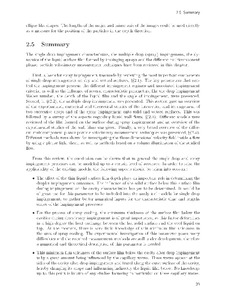 Preview |
|
PDF
Diss_Van_Hinsberg_TU_Darmstadt_Teil_C.pdf
Copyright Information: CC BY-NC-ND 2.5 Generic - Creative Commons, Attribution, NonCommercial, NoDerivs .
Download (11MB)
| Preview
|
![[img]](https://tuprints.ulb.tu-darmstadt.de/2089/1.hassmallThumbnailVersion/Diss_Van_Hinsberg_TU_Darmstadt_Teil_A.pdf)  Preview |
|
PDF
Diss_Van_Hinsberg_TU_Darmstadt_Teil_A.pdf
Copyright Information: CC BY-NC-ND 2.5 Generic - Creative Commons, Attribution, NonCommercial, NoDerivs .
Download (12MB)
| Preview
|
![[img]](https://tuprints.ulb.tu-darmstadt.de/2089/2.hassmallThumbnailVersion/Diss_Van_Hinsberg_TU_Darmstadt_Teil_B.pdf) 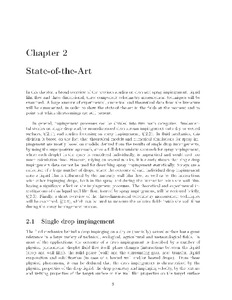 Preview |
|
PDF
Diss_Van_Hinsberg_TU_Darmstadt_Teil_B.pdf
Copyright Information: CC BY-NC-ND 2.5 Generic - Creative Commons, Attribution, NonCommercial, NoDerivs .
Download (15MB)
| Preview
|
![[img]](https://tuprints.ulb.tu-darmstadt.de/2089/4.hassmallThumbnailVersion/Diss_Van_Hinsberg_TU_Darmstadt_Teil_D.pdf) 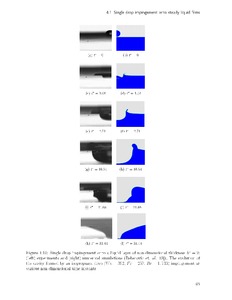 Preview |
|
PDF
Diss_Van_Hinsberg_TU_Darmstadt_Teil_D.pdf
Copyright Information: CC BY-NC-ND 2.5 Generic - Creative Commons, Attribution, NonCommercial, NoDerivs .
Download (13MB)
| Preview
|
![[img]](https://tuprints.ulb.tu-darmstadt.de/2089/5.hassmallThumbnailVersion/Diss_Van_Hinsberg_TU_Darmstadt_Teil_E.pdf) 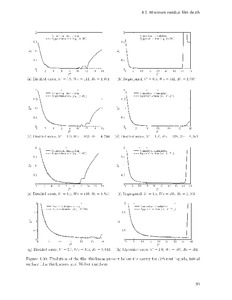 Preview |
|
PDF
Diss_Van_Hinsberg_TU_Darmstadt_Teil_E.pdf
Copyright Information: CC BY-NC-ND 2.5 Generic - Creative Commons, Attribution, NonCommercial, NoDerivs .
Download (13MB)
| Preview
|
![[img]](https://tuprints.ulb.tu-darmstadt.de/2089/6.hassmallThumbnailVersion/Diss_Van_Hinsberg_TU_Darmstadt_Teil_F.pdf) 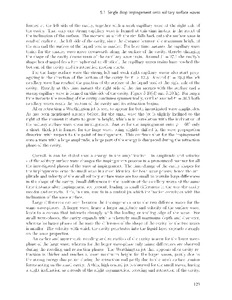 Preview |
|
PDF
Diss_Van_Hinsberg_TU_Darmstadt_Teil_F.pdf
Copyright Information: CC BY-NC-ND 2.5 Generic - Creative Commons, Attribution, NonCommercial, NoDerivs .
Download (13MB)
| Preview
|
![[img]](https://tuprints.ulb.tu-darmstadt.de/2089/7.hassmallThumbnailVersion/Diss_Van_Hinsberg_TU_Darmstadt_Teil_G.pdf) 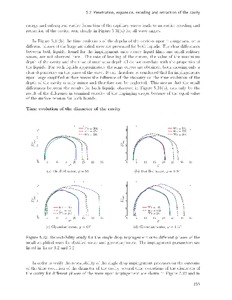 Preview |
|
PDF
Diss_Van_Hinsberg_TU_Darmstadt_Teil_G.pdf
Copyright Information: CC BY-NC-ND 2.5 Generic - Creative Commons, Attribution, NonCommercial, NoDerivs .
Download (12MB)
| Preview
|
![[img]](https://tuprints.ulb.tu-darmstadt.de/2089/8.hassmallThumbnailVersion/Diss_Van_Hinsberg_TU_Darmstadt_Teil_H.pdf) 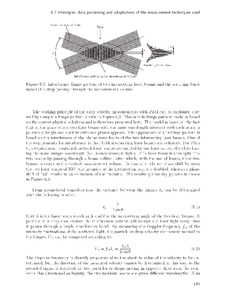 Preview |
|
PDF
Diss_Van_Hinsberg_TU_Darmstadt_Teil_H.pdf
Copyright Information: CC BY-NC-ND 2.5 Generic - Creative Commons, Attribution, NonCommercial, NoDerivs .
Download (13MB)
| Preview
|
![[img]](https://tuprints.ulb.tu-darmstadt.de/2089/9.hassmallThumbnailVersion/Diss_Van_Hinsberg_TU_Darmstadt_Teil_I.pdf) 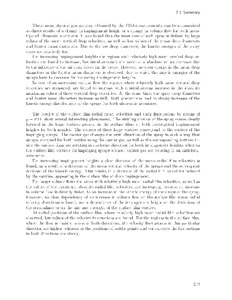 Preview |
|
PDF
Diss_Van_Hinsberg_TU_Darmstadt_Teil_I.pdf
Copyright Information: CC BY-NC-ND 2.5 Generic - Creative Commons, Attribution, NonCommercial, NoDerivs .
Download (11MB)
| Preview
|
![[img]](https://tuprints.ulb.tu-darmstadt.de/2089/10.hassmallThumbnailVersion/Diss_Van_Hinsberg_TU_Darmstadt_Teil_J.pdf) 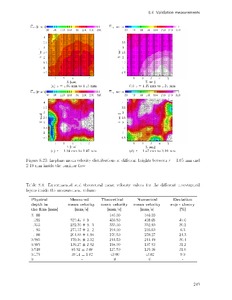 Preview |
|
PDF
Diss_Van_Hinsberg_TU_Darmstadt_Teil_J.pdf
Copyright Information: CC BY-NC-ND 2.5 Generic - Creative Commons, Attribution, NonCommercial, NoDerivs .
Download (12MB)
| Preview
|
![[img]](https://tuprints.ulb.tu-darmstadt.de/2089/11.hassmallThumbnailVersion/Diss_Van_Hinsberg_TU_Darmstadt_Teil_K.pdf) 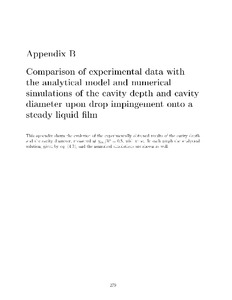 Preview |
|
PDF
Diss_Van_Hinsberg_TU_Darmstadt_Teil_K.pdf
Copyright Information: CC BY-NC-ND 2.5 Generic - Creative Commons, Attribution, NonCommercial, NoDerivs .
Download (7MB)
| Preview
|
![[img]](https://tuprints.ulb.tu-darmstadt.de/2089/12.hassmallThumbnailVersion/Diss_Van_Hinsberg_TU_Darmstadt_Teil_L.pdf) 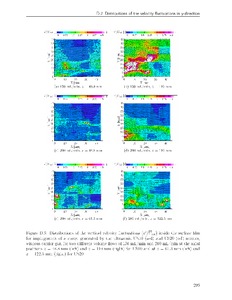 Preview |
|
PDF
Diss_Van_Hinsberg_TU_Darmstadt_Teil_L.pdf
Copyright Information: CC BY-NC-ND 2.5 Generic - Creative Commons, Attribution, NonCommercial, NoDerivs .
Download (7MB)
| Preview
|
| Item Type: |
Ph.D. Thesis |
| Type of entry: |
Primary publication |
| Title: |
Investigation of drop and spray impingement on a thin liquid layer accounting for the wall film topology |
| Language: |
English |
| Referees: |
Tropea, Prof. Dr.- Cameron ; Roisman, Priv.-Doz. Ilia ; Moreira, Prof. Dr.- Antonio |
| Date: |
19 March 2010 |
| Place of Publication: |
Darmstadt |
| Date of oral examination: |
15 December 2009 |
| Corresponding Links: |
|
| Abstract: |
The single drop impingement processes upon steady and wavy liquid surface films of finite thickness and the spray impingement process onto rigid walls was studied both experimentally, as well as computationally and analytically. The global aim of the present study was to develop a mathematical model of the single drop and spray impingement process onto liquid wall films. To achieve this aim, the focus was put in particular on the description of the hydrodynamics of the wall surface film produced by spray impingement onto the wall, on a broader understanding of the physics involved in modeling of spray impingement processes and on the formulation of mathematical models based on experimental data and numerical simulations of the single drop impingement. Two separate approaches were applied to obtain the necessary experimental and numerical results. The first approach focused on the single drop impingement process upon steady and wavy liquid films of finite thickness, to understand in detail the physics behind the splash mechanism, the corona formation, the evolution of the cavity below the liquid surface and the typical time and length scales of the impingement process. It was observed that for the single drop impingement onto steady wall films the penetration velocity of the cavity was constant and independent of all the investigated parameters, resulting in a direct relation between the time at which the cavity reached the bottom of the liquid film and the film thickness. A thicker film and/or a lower Weber number led to a lower radial expansion of the cavity, due to the larger surface tension forces acting on the cavity, resulting in a lower maximum diameter of the cavity. A faster receding and retraction of the cavity was observed for lower Weber numbers, but the time instant of retraction was independent of the film thickness. The study of the impingement of single drops onto solitary surface waves led to several important outcomes for spray impingement. It was found that the inclination and propagation of the surface film had a significant effect on the impingement outcomes, in particular on the time evolution of the shape of the cavity. The solitary surface wave introduced a relative velocity component upon impingement, which, together with the velocity distribution inside the liquid film, resulted in a clear increasing inclination of the cavity with time. Depending on the phase of the wave at impingement, a weak or strong interaction of one side of the expanding rim with the wave surface was observed, leading to an asymmetrical expansion of the cavity. The formation, strength and motion of the capillary waves changed magnificently for different phases of the wave, where the presence or absence of the capillary waves at the left and/or right side of the cavity, in combination with the unequal distribution of the surface tension forces over the cavity surface, induced an asymmetrical receding and retraction of the cavity, as well as an inclined Worthington jet. With these results mathematical models of the impingement processes could be developed and implemented into the numerical codes for single drop and spray impingement. The second approach was the direct measurement of the velocity distributions inside the wall film, produced by the impingement of an ultrasonic spray onto this rigid wall. A volumetric micro-Particle-Image-Velocimetry technique was developed to obtain the distributions of the mean and fluctuating three-dimensional film velocities under bad light conditions. By measuring the wall film velocity distributions under realistic conditions, not only the unsteady wall film flow, generated by the surrounding drop impingements, was taken into account, but also the interactions of drops with other impinging drops, both in the spray and during the interaction with the wall film. It was found that the swirling motion of the spray was transferred directly to the liquid film in the form of large vortices inside the liquid film. Furthermore, it was shown that for larger volume flows the areas with relatively high mean radial film velocities, as well as the values of the maximum absolute film velocities, increased. |
| Alternative Abstract: |
| Alternative Abstract | Language |
|---|
Der Aufprall von Einzeltropfen auf dünne Flüssigkeitsfilme mit ruhender und welliger Oberfläche und der Sprayaufprall auf feste Wände sind sowohl experimentell, als auch numerisch und analytisch untersucht worden. Das Hauptziel der vorliegenden Arbeit war die Entwicklung eines mathematischen Modells des Einzeltropfen- und Sprayaufpralls auf Flüssigkeitsfilme. Um dieses Ziel zu erreichen wurde der Schwerpunkt insbesondere auf die Beschreibung der Hydrodynamik von Oberflächenfilmen gelegt, die beim Sprayaufprall auf die Wand entstehen. Die Hauptthemen waren ein breiteres Verständnis der Physik, die in der Modellierung der Sprayaufprallprozesse involviert ist, und die Formulierung mathematischer Modelle, welche auf den experimentellen Daten und numerischen Simulationen des Einzeltropfenaufpralls basieren. Zwei separate Vorgehensweisen wurden für die Erzeugung der benötigten experimentellen und numerischen Resultate verfolgt. Die erste Vorgehensweise konzentrierte sich auf den Aufprall von Einzeltropfen auf ruhige und wellige Flüssigkeitsfilme. Hiermit konnte ein detailliertes Verständnis der Physik des Splashmechanismus, der Entstehung der Krone, der Evolution des Kraters unter der Filmoberfläche und der typischen Zeit- und Längemaßstäbe des Aufprallprozesses erzielt werden. Es wurde festgestellt, dass beim Einzeltropfenaufprall auf ruhende Wandfilme die Eindringgeschwindigkeit des Kraters konstant und unabhängig von allen untersuchten Parametern war. Dieses resultierte in einem direkten Zusammenhang zwischen dem Zeitpunkt, an dem der Krater den Boden des Flüssigkeitsfilms erreichte und der Tiefe des Films. Ein tieferer Film und/oder eine niedrigere Weberzahl entsprach aufgrund des größeren Einflusses der Oberflächenspannung auf den Krater einer niedrigeren Ausbreitung des Kraters und deswegen einem niedrigeren Wert des maximalen Kraterdurchmessers. Eine niedrigere Weberzahl resultierte in einem schnelleren Zurückgehen und Zurückziehen des Kraters; der Zeitpunkt des Zurückziehens des Kraters war jedoch unabhängig von der Filmtiefe. Die Untersuchung des Einzeltropfenaufpralls auf einzelne Oberflächenwellen lieferten einige wichtige Ergebnisse für den Sprayaufprall. So wurde gezeigt, dass die Neigung und Fortpflanzung des Oberflächenfilms eine erhebliche Auswirkung auf den Aufprallprozess hatten, insbesondere auf die zeitliche Entwicklung der Kraterform. Die einzelne Oberflächenwelle bringt eine relative Geschwindigkeitskomponente nach dem Aufprall ein, welche zusammen mit der Geschwindigkeitsverteilung im Film in eine zeitlich erhöhte Neigung des Kraters resultierte. Abhängig von der Phase der Welle beim Aufprall wurde eine schwache oder starke Interaktion einer Seite des sich ausbreitenden Kraters mit der Wellenoberfläche festgestellt, was eine asymmetrische Kraterausbreitung zur Folge hatte. Die Entstehung, Stärke und Bewegung der Kapillarwellen änderte sich deutlich mit der Änderung der Phase der Welle. Mit Hilfe dieser Ergebnissen konnten mathematische Modelle des Aufprallprozesses erstellt und in den numerischen Code für Einzeltropfen- und Sprayaufprall implementiert werden. Die zweite Vorgehensweise basierte auf der direkten Messung der Geschwindigkeitsverteilungen in den Wandfilmen, welche sich beim Aufprall eines Ultraschallsprays auf eine feste Oberfläche einstellten. Eine volumetrische Mikro-Partikel-Image-Velocimetry Technik wurde entwickelt, um die Verteilung der mittleren Filmgeschwindigkeiten und die Geschwindigkeitsschwankungen unter schwierigen Beleuchtungskonditionen zu bestimmen. Durch die Messung der Geschwindigkeitsverteilung im Wandfilm unter realen Bedingungen wurden zwei wichtige Parameter berücksichtigt: die instationäre Wandfilmströmung, die durch den Tropfenaufprall in der Umgebung des Messpunktes resultiert und die Interaktionen der Tropfen mit anderen aufprallenden Tropfen, sowohl im Spray als auch während der Interaktion mit dem Wandfilm. Es wurde festgestellt, dass die rotierende Bewegung des Sprays direkt an den Flüssigkeitsfilm übertragen wurde in Form von großen Wirbeln im Oberflächenfilm. Sowohl ein Anstieg der Flächen mit relativ hohen mittleren radialen Filmgeschwindigkeiten, als auch eine Erhöhung der maximalen absoluten Filmgeschwindigkeiten, wurde für höhere Volumenströme festgestellt. | German |
|
| Uncontrolled Keywords: |
Spray impingement, single drop impact, wall film, solitary waves, surface waves, PIV, micro-PIV, astigmatism, three-dimensional three-component velocimetry |
| Alternative keywords: |
| Alternative keywords | Language |
|---|
| Spray impingement, single drop impact, wall film, solitary waves, surface waves, PIV, micro-PIV, astigmatism, three-dimensional three-component velocimetry | English |
|
| URN: |
urn:nbn:de:tuda-tuprints-20892 |
| Additional Information: |
Die Druchausg. ist als Bd. 23 der Reihe "Forschungsberichte Strömungslehre und Aerodynamik" im Shaker-Verlag, Aachen (ISBN 978-3-8322-8956-0) erschienen. |
| Classification DDC: |
600 Technology, medicine, applied sciences > 630 Agriculture, veterinary medicine
500 Science and mathematics > 530 Physics
600 Technology, medicine, applied sciences > 620 Engineering and machine engineering
600 Technology, medicine, applied sciences > 600 Technology |
| Divisions: |
16 Department of Mechanical Engineering > Fluid Mechanics and Aerodynamics (SLA) |
| Date Deposited: |
29 Mar 2010 08:59 |
| Last Modified: |
08 Jul 2020 23:43 |
| URI: |
https://tuprints.ulb.tu-darmstadt.de/id/eprint/2089 |
| PPN: |
22207857X |
| Export: |
|



 Drucken
Drucken
 Impressum
Impressum